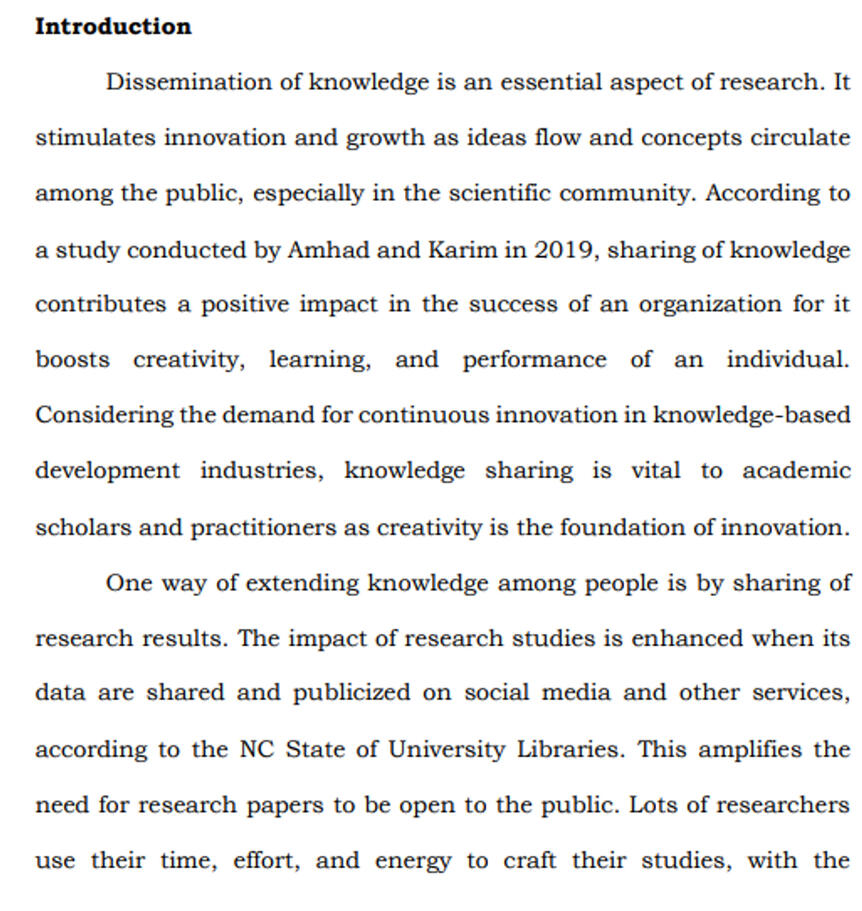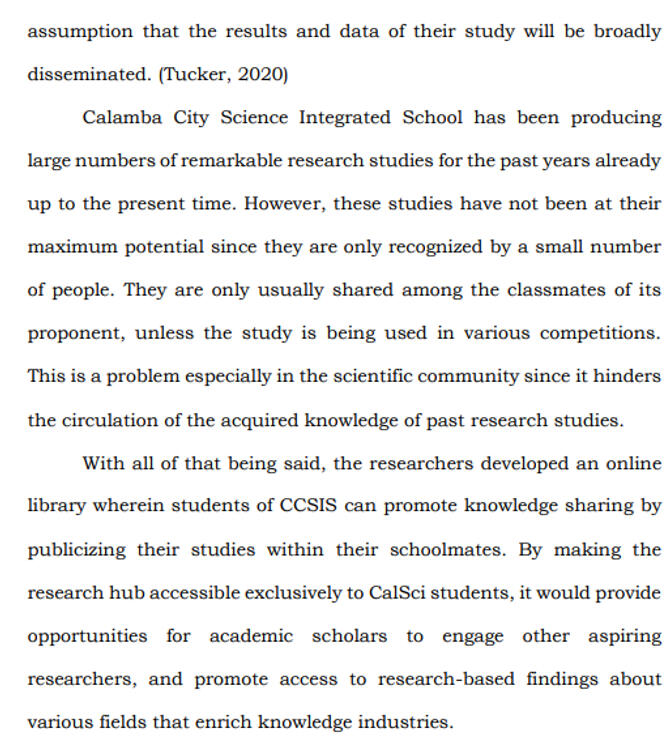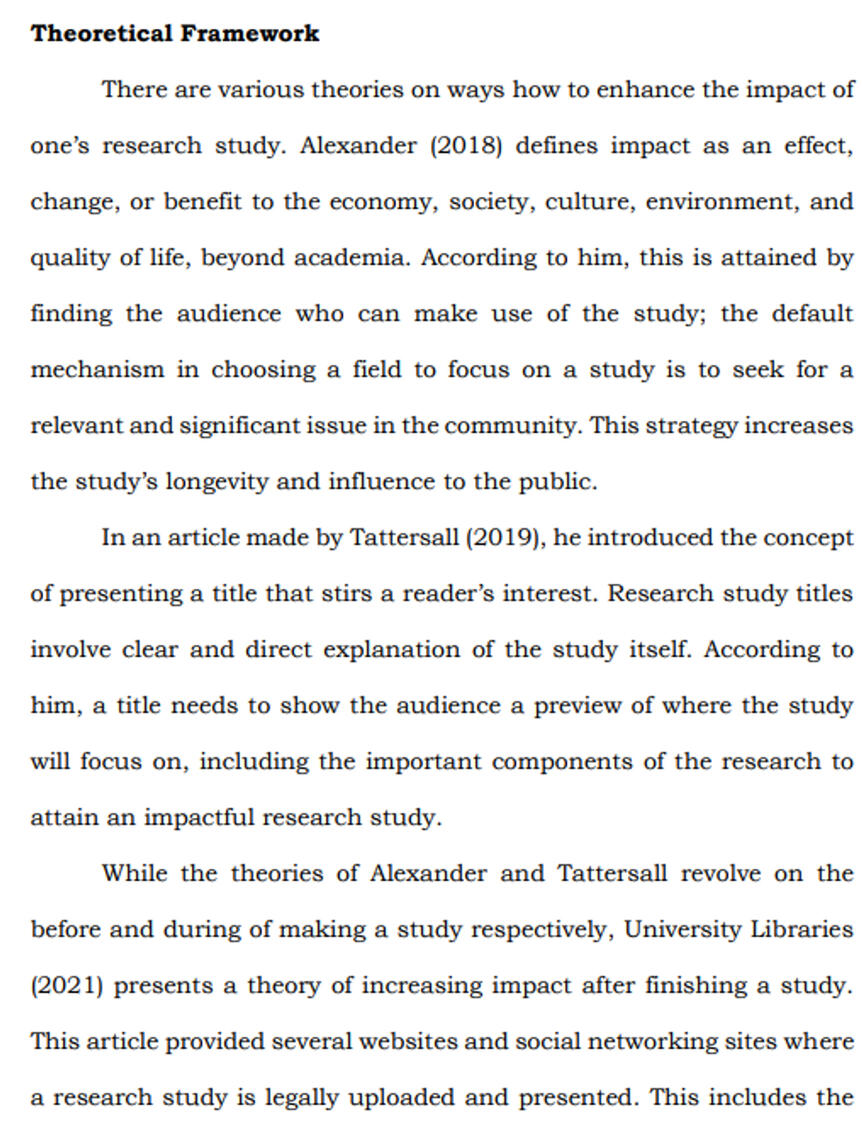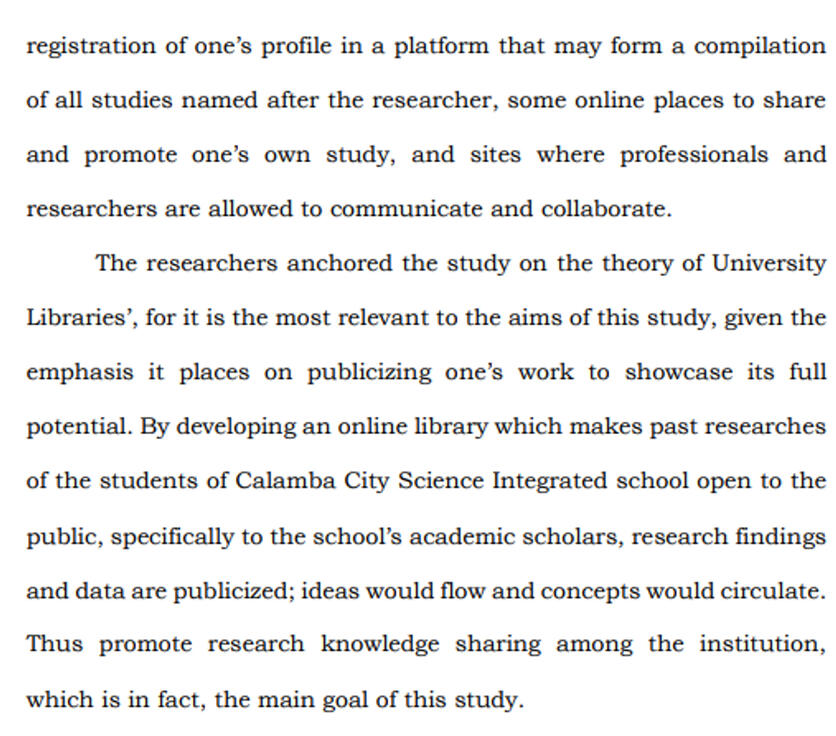CHAPTER 1:
The Problem and its Background
Introduction
I. Structure focusing on 4 relevant ideas:
TOPIC or subject matter: define and elaborate using methods of paragraph development like classification and giving examples.
RELEVANCE of the topic: How is it relevant globally, nationally, and locally? Cite the role that the topic plays in the aforementioned and the benefits derived from it.
REASONS for Choosing the topic: emphasize the motivation or cause of choosing the topic.
PURPOSE of the Study: discuss the objective or goals of the study once accomplished.
II. Sample


Background of the Study
I. Structure focusing on 4 relevant ideas:
Consist of the factors (e.g. use or ingredient of a plant you found out or a remedy commonly practiced but never proven) that led the investigator to lunch the study.
The need to explore the problem and some other relevant conditions.
Describe the problem intended to be addressed and refer to the relevant literature in the field.
*Note that the Background of the Study is greatly focused on the factors which have led to the problem, comprising the problem, and historical significance relative to the problem that leads one to create a study to address the issue.
Theoretical Framework
I. What?
A theoretical framework consists of concepts, together with their definitions, and existing theory/theories that are used for your particular study.
The theoretical framework must demonstrate an understanding of theories and concepts that are relevant to the topic of your research paper and that will relate it to the broader fields of knowledge in the class you are taking.
II. HOW?
A theoretical framework consists of concepts, together with their definitions, and existing theory/theories that are used for your particular study.
Clearly describe the framework, concepts, models, or specific theories that underpin your study.This includes noting who the key theorists are in the field who have conducted research on the problem you are investigating and, when necessary, the historical context that supports the formulation of that theory. This latter element is particularly important if the theory is relatively unknown or it is borrowed from another discipline.
Position your theoretical framework within a broader context of related frameworks, concepts, models, or theories. There will likely be several concepts, theories, or models that can be used to help develop a framework for understanding the research problem. Therefore, note why the framework you've chosen is the appropriate one.
The present tense is used when writing about theory.
**You should make your theoretical assumptions as explicit as possible. ** Later, your discussion of methodology should be linked back to this theoretical framework.
Don’t just take what the theory says as a given! Reality is never accurately represented in such a simplistic way; if you imply that it can be, you fundamentally distort a reader's ability to understand the findings that emerge. Given this, always note the limitations of the theoretical framework you've chosen (i.e., what parts of the research problem require further investigation because the theory does not explain a certain phenomenon)
III. SAMPLE

